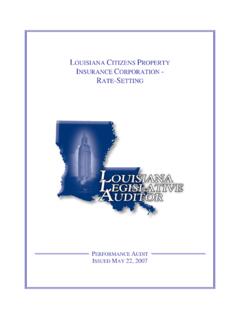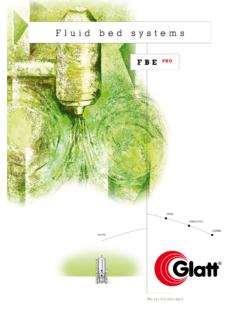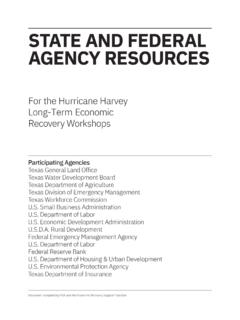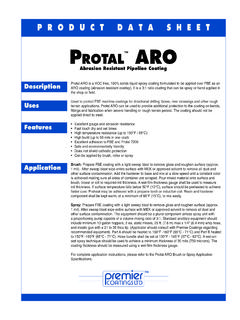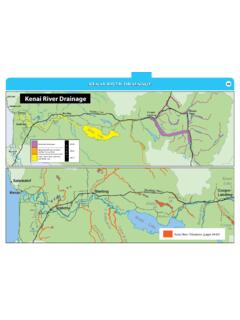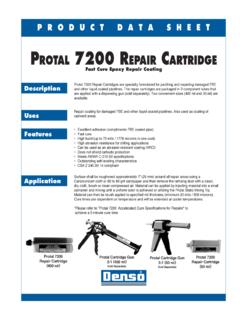Transcription of Dual-layer fusion-bonded epoxy (FBE) coatings protect ...
1 Dual-layer fusion - bonded epoxy (FBE) coatings protect pipelines Alan Kehr 3M USA Matt Dabiri Williams Gas Pipeline Ray Hislop 3M UK Synopsis. Utilizing two layers of FBE provides great versatility in coatings used for pipeline protection. The first layer has the properties of a standalone FBE coating . The top layer provides mechanical-damage resistance from impact or gouging during handling and construction. Alternatively, it may be designed to resist UV chalking or intended to work on a high-temperature pipeline. This paper reviews the performance characteristics of Dual-layer FBE pipeline coating systems and provides a case history of dual- coating usage the 1150-km Kern River 2003 Expansion Project in the western USA, which utilizes a Dual-layer FBE for its entire length.
2 The review includes application and installation specifics . PIPELINE coating SYSTEMS Effective corrosion prevention for underground structures requires a combination of a durable coating and cathodic protection. The overall protection cost includes the cost of the coating and the cathodic protection system. coating choice can significantly affect the cost of cathodic protection. (1) The cost of a cathodic protection system is related to the electrical resistivity of the coating in use on a pipe. The resistivity depends on the electrical characteristics of the coating and the total area of exposed steel as a result of damage to the coating . The electrical current requirement to protect the pipeline climbs with time for all coatings . coatings with the lowest initial current requirement and maximum stability (that is, the least amount of change in current requirement over time) minimize the cost of cathodic-protection system installation and operation.
3 (2) Current requirements vary significantly based on the environment (soil resistivity, temperature, etc.). They also vary depending on the coating system. Figure 1 shows the relative current requirements for various pipecoating systems as measured by a Canadian gas-transmission company. While the example company did not have experience with three-layer polyolefin coatings , the normal current requirements for 3-layer coatings are low. (Three-layer systems consist of an FBE corrosion or adhesion layer, a polyolefin adhesive polymer, and a polyolefin topcoat.) Because of this, a minimum amount of equipment needs to be installed to provide cathodic protection, making installation, maintenance, and operational costs for three-layer systems about the same as for FBE. (3) Figure 1.
4 Current requirement measurements by a major gas company showed a significant difference among pipe coatings in their system. Note: Extruded PE is not a 3-layer system it is an extruded mastic with a polyethylene overcoat. (3, 4, 5 ) FBE SINGLE-LAYER PIPECOATINGS Since first introduced in 1960, single-layer FBE has proven its capability as a pipeline coating , is now the most commonly used pipeline coating in North America, and has a large following in the rest of the world. It not only has the performance characteristics important to the application and the construction processes, but also has proven performance in underground and undersea service. It has proven effective for line pipe, girthwelds, fittings, and bends. When used at a greater thickness, it has worked effectively with impinged concrete, directional-bore installation, and high pipeline operating temperatures.
5 There are a number of properties that make fusion - bonded - epoxy materials useful as pipecoatings. These include: Excellent adhesion to well-cleaned steel Good chemical resistance Low oxygen permeability Non-shielding works with cathodic protection (CP) No reported cases of stress-corrosion cracking (SCC) of pipe coated with FBE (6) The coating remains bonded to the extent that it separates the pipeline steel from an SCC chemical environment It allows the passage of current in case of bond failure The cleaning process alters the surface to make it less susceptible to SCC (removes mill scale and induces stress through blast cleaning) (7) FBE is one of the high-performance coatings that meets these requirements. Resistance to biological attack CP: Practical ExperienceCoating Type vs.
6 Current Requirements1101001000100000510152025 Time in YearsCurre nt - microA/m2 FBE and 3 LPEE xtruded PECoal Tar EnamelAsphalt EnamelAsphalt Mastic Tough frequently installed under the sea, through rolling plains, in rocky, mountainous areas, in the desert, and the arctic Excellent penetration resistance Good impact resistance Impact damage is limited to the point of contact Damage is easily seen Damage is easily repaired Good abrasion resistance Good flexibility DUAL-COAT FBE PIPECOATINGS Dual-coat FBE pipecoating systems, introduced in the early 1990s, provide even greater capability. (8, 9) They utilize the application of an FBE topcoat onto the base FBE coating . The top layer typically, but not necessarily, is deposited during the melt (pre-gelation) stage of the primary layer.
7 The result is an intimate chemical bond between the two layers. (10) A significant advantage of multilayer technology is that unique characteristics can be developed by selection of different coating layers with specific properties. (11) Each layer is designed to impart specific characteristics that combine to produce performance results that significantly exceed those of a single coating . For pipeline use, the bottom layer is designed as the corrosion coating and is often the same material used as a stand-alone FBE. It is important to realize that there are significant performance differences among commercially available coatings . Not all FBE pipeline coatings are created equal (12, 13). See Figure 2. New primary coatings are also under evaluation for high-temperature pipeline service.
8 Figure 2. While FBE pipeline coatings have good cathodic-disbondment (CD) resistance, some are better than others. Reduced disbondment means reduced current requirements over the lifetime of the pipeline. The chart shows a comparison of Different Commercial FBE Systems Provide Varying CD Resistance28 Day, 65oC, volt, 3% NaCl04812 ABCDE FGFBE coating SystemCD Disbondment - mmrcommercially available FBE pipecoating systems after 28-day, 65 C cathodic-disbondment testing. (14) The top layer of a dual-coat FBE system is designed for specific applications. These include: Anti slip (rough surface, high friction) Ultraviolet (UV) resistance (weathering) High temperature Improved damage resistance during construction Anti slip The rough-coat systems were originally designed to increase the slippage resistance of concrete weight coatings used for anti-buoyancy underwater pipeline installation.
9 They are still used for this purpose, primarily for shallow water installation. For deep lay, a two-part epoxy is used in addition to provide improved bond between the pipe coating and the concrete. See Figure 3. Rough coat systems are now more often specified for S-lay offshore installation and for personnel safety. The increased friction improves the pipe handling and the non-slippery characteristic provides a better surface for walking on wet pipe. Ultraviolet (UV) resistance FBE coatings designed for underground use chalk when exposed to humidity and sunlight (UV radiation). Some powder coatings ( polyester) have good resistance to sunlight exposure. These materials are also used to provide a required color or finish to a corrosion-coated article. They can be applied in the next step after the FBE corrosion coating application.
10 These materials, however, are slow curing and not well suited for in-line FBE pipecoating application plants. See Figure 3. Figure 3. When the corrosion- coating properties of FBE are required, but the usage includes UV (sunlight) exposure, a functional FBE overcoated with a UV-resistant polyester powder provides a system with a combination of good corrosion properties and good weathering capabilities. The UV coating can also provide a particular color or finish. An FBE Dual-layer friction (anti-slip) coat reduces the probablility of concrete slippage during laybarge installation. The roughness maps show the difference in surface profile for a standard FBE compared to one designed to provide a non-slip surface. High-friction coatings also provide a safer surface for people who must stand or walk on coated pipe and improve traction for S-lay installation.
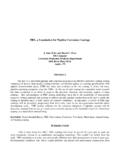
![p I^ lU- ] 10 - Louisiana](/cache/preview/f/7/3/f/7/d/c/4/thumb-f73f7dc47bb283cf34089f83231d0637.jpg)
